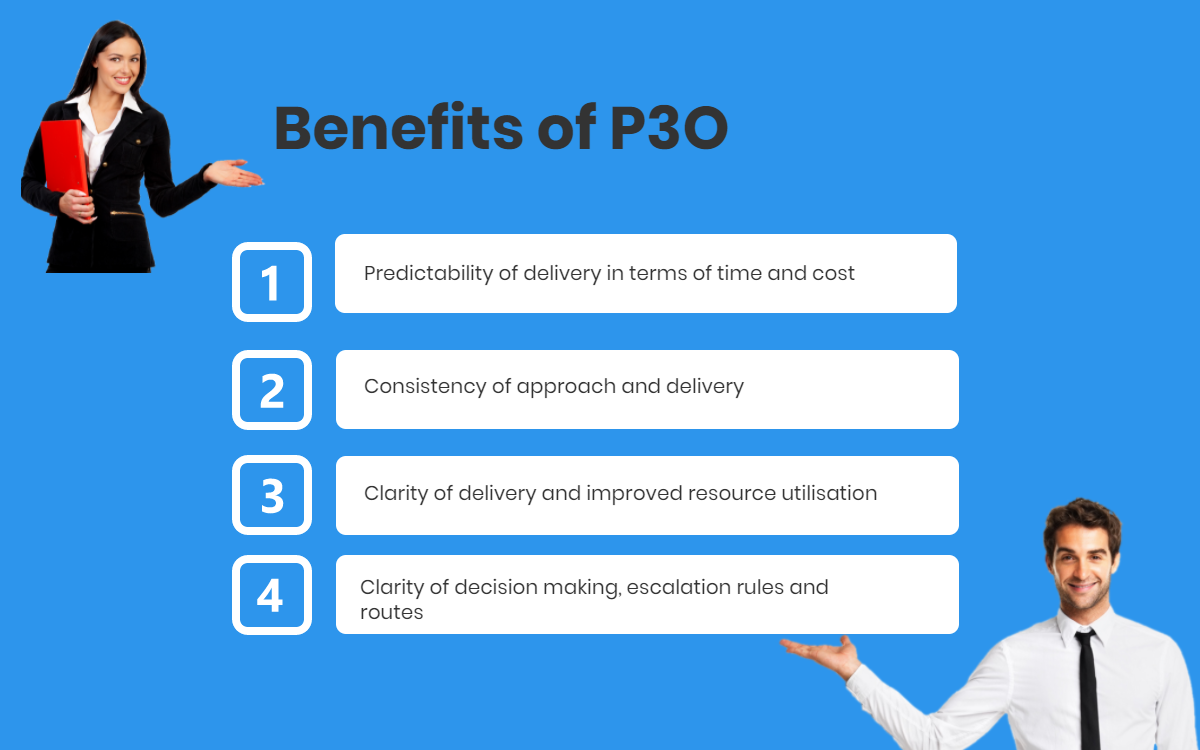P3O® Foundation & Practitioner
The P3O® Foundation and Practitioner course provides essential skills and knowledge needed for the development of a governance structure or enabling management environment for all kinds of change in an organisation at all levels. The course enables the delegates to establish, develop and maintain an efficient decision making in the organisation and also provide integrated support for launching change. The P3O® course introduces delegates to the various techniques, principles and processes used in the effective implementation of program, portfolio and project management. The five-day course enables the delegates to develop effective risk models to suit the maturity culture of the organisation and ensure the consistent delivery of projects and program through optimum utilization of the available resources. The delegates will also learn how to enhance the decision making capability, visibility and accountability of the organisation. The course teaches how to exploit the potential opportunities as part of risk analysis and successfully implement the performance requirements of the organisation via program, project and operational business units.
MSP TrainingPick the right projects and programs


